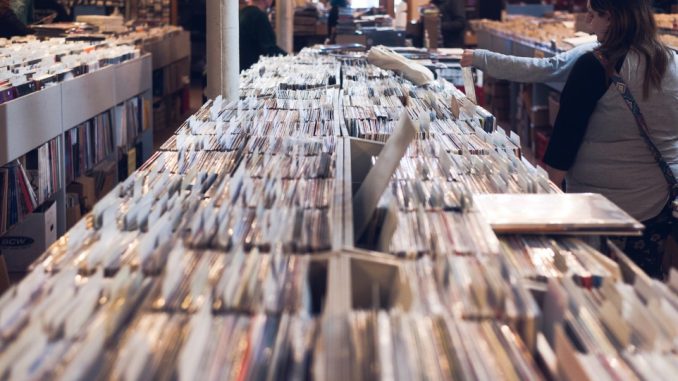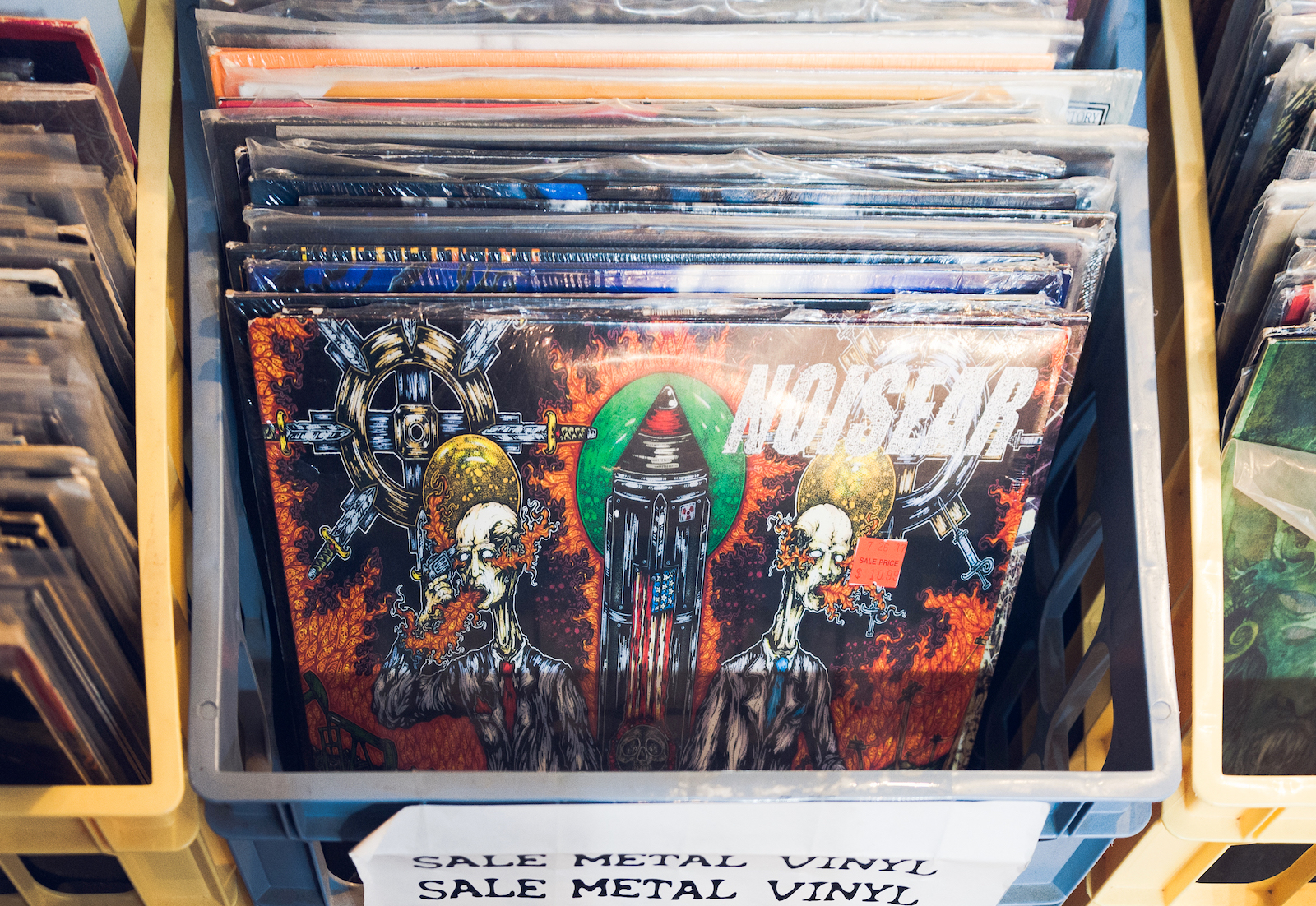
The format has a long way to go before it’s accepted by music lovers.
You won’t be able to buy an album on HD vinyl until next year, at least, and once you can, it’s going to cost quite a bit more than a traditional album. Loibl’s company, Rebeat Innovations, doesn’t have any test pressings for proof and won’t until at least this August. Still, Loibl wants you to trust him. “Be a little patient and let me convince you,” he said.
Rebeat is working with an established turntable manufacturer to design what Loibl calls a reference turntable for enthusiasts. It’ll cost anywhere from $1,000 to $1,500 and will probably launch on Kickstarter. Eventually, you’ll be able to buy needles and cartridges tuned specifically for the format for around the same price as a standard ones. But he stressed that you don’t need the special equipment to hear HD vinyl’s benefits, which only fuels skepticism.
The heart of HD vinyl is a change to the manufacturing process. Traditional record pressing goes like this: A musician sends the vinyl mastering studio a recording, and from there it’s cut into a soft lacquer disc using a lathe. That master is then sent to a pressing plant, where it’s electroplated with nickel, a toxic process with environmentally hazardous byproducts. That metal master is separated from the lacquer and becomes the “father” disc, and rather than grooves, it has ridges. The master is then electroplated again, producing the “mother” disc, which is then used to create the stamping disc. The stamping disc, as you might guess, is used to stamp out records from pucks of PVC plastic.
HD vinyl skips a few of those steps, supposedly shaving a few weeks off manufacturing time. Music is fed into CAD software where it’s converted into a 3D map of bumps and grooves. That data is etched into a ceramic pressing plate using a laser. Since HD vinyl eliminates the need for electroplating, the promise is faster production and reduced pollution. Switching a pressing plant over will hypothetically be as easy as swapping out a nickel plate for a ceramic one. It’s a little like direct metal mastering, a technique introduced in the ’80s. But that uses copper. Ceramic is harder than both that and nickel, and the promise is that the last pressing will sound as good as the first.
However, there’s still a step missing from the HD process: inspection. Traditionally, as a master is cut, there’s a microscope pointed at it. This gives an engineer an idea of how a record will sound and allows them to see if there are any deformations that’d cause a skip or the needle to pop off. That doesn’t exist yet for HD vinyl. The plan is to design an emulator so engineers can “hear” what the audio data sounds like as it’s transformed into a virtual groove. But right now it’s just a plan, and a huge obstacle for Loibl.
Speaking of grooves, a mastering engineer can use the extra space to make the record sound better by increasing the amplitude and dynamic range or add extra playing time. For example, they might choose 20 percent more playing time to fit more songs on one side, and then add five percent more dynamic range and amplitude. Or, an “HD remaster” of an album could keep the same track listing, but have a third more dynamic range.
“If we can get more runtime with higher quality, without having to go double vinyl, that’d be a huge benefit.”
Metal Blade Records’ Ryan Williams is most intrigued by the promise of extra playing time because with many metal albums, most of the dynamic range has already been squeezed out. “If we can get more runtime with higher quality, without having to go double vinyl, that’d be a huge benefit,” Williams said.
Currently, you can put around 22 minutes of music on each side of a record without hurting sound quality. And moving to a double LP drives up the price and potentially lowers sales. HD vinyl promises an extra six minutes per side, possibly resurrecting the tracks lost from an album recorded for CD.
Time is easy to measure, though. Sound quality? That’s something you need special equipment to examine, and without any test recordings, you have to take Loibl at his word. Williams said that it’s easy to make people think a recording sounds better just by playing it half a decibel louder. But a spectrograph is like a lie-detector for audio and isn’t susceptible to such parlor tricks.
Viryl Technologies thinks it’s the perfect candidate for Loibl’s test pressings. Since 2015, Viryl has installed nearly 40 of its fully-automated Warm Tone presses around the world, each one capable of pumping out 1,000 records in an eight-hour shift. Some of the best-sounding new albums in your collection were probably made on its machines.

But because it hasn’t heard the technology in action, marketing manager Alex DesRoches said that Viryl is taking the same cautious wait-and-see approach that everyone else is. “Really, all I can say is it’s got potential.”
The same was said about the trio of formats that fought for audiophile souls in the early 2000s. During the compact disc’s twilight years, Sony and Columbia partnered on Super Audio CD (SACD), which held over four times the data of a standard CD. DVD Audio offered albums in 5.1 surround sound, and High Definition Compatible Digital (HDCD) from Microsoft used a specific encoding technique to squeeze better sound from a standard CD. Each boasted higher fidelity, longer playing times and/or backward compatibility, but none of them had mainstream success.
Loibl says he could barely tell the difference switching between SACD and standard CDs. But he promises, perhaps dubiously, that, “even somebody without golden ears will immediately recognize the [HD vinyl] audio quality.”
Even if it does sound noticeably better, HD vinyl might still have trouble winning people over. Avid music collector and studio musician Scott Wozniak is intrigued that he wouldn’t need to buy new hardware, but told us, “If I wanted higher quality, or silence, I would listen to a CD.”
Read the full article at engadget.com
In the meantime, you’ll find back catalogue vinyl LPs, 12″s, 7″s, CDs and Music Memorabilia from the 1950s to the current date, virgin vinyl, 180gm, audiophile pressings and more at eil.com
New stock added hourly
eil.com – the world’s best online store for rare, collectable and out of print Vinyl Records, CDs & Music memorabilia since 1987



Leave our vinyl alone!!!!!!